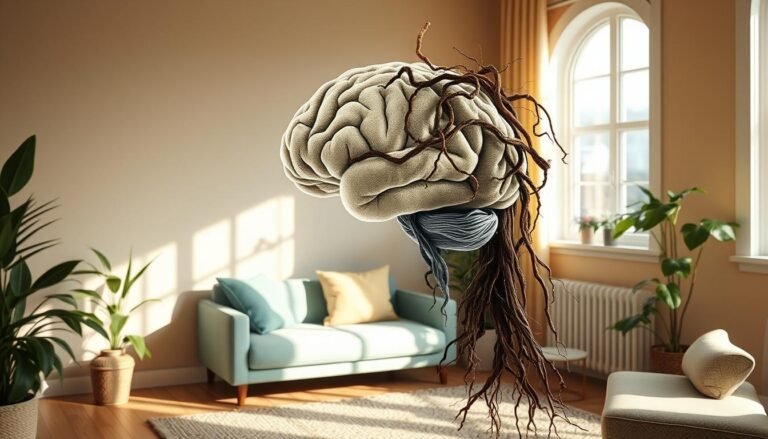A Step-by-Step Guide to Medical Treatment for Addiction
Are you struggling to understand the complex journey of addiction recovery? What if there was a roadmap that could guide you through the challenging path of medical treatment for addiction?
Addiction is a serious medical condition that requires professional intervention and care. My guide will walk you through the essential steps of medical treatment for addiction. It offers hope and practical insights for those seeking recovery.
Navigating addiction treatment can feel overwhelming. But with the right medical approach from experts like Mayo, individuals can successfully overcome substance use disorders. They can reclaim their lives.
Key Takeaways
- Medical treatment for addiction is a personalized process
- Professional intervention is key for successful recovery
- Treatment involves multiple stages, from detox to long-term support
- Combining medical and psychological approaches increases recovery chances
- Ongoing support and treatment are essential for maintaining sobriety
Understanding Addiction as a Medical Condition
Addiction is more complex than many think. It’s a chronic brain disease that changes how people interact with substances and behaviors. Addiction treatment information shows that nearly 23 million Americans struggle with substance dependency. This is a big public health issue.
The Science Behind Drug Dependency
Addiction is a medical condition with compulsive behaviors and changes in the brain. The brain’s reward system gets rewired. This creates strong chemical dependencies that make it hard to control.
- Brain chemistry fundamentally shifts during substance abuse
- Genetic predispositions influence addiction vulnerability
- Neurological pathways become permanently altered
Common Misconceptions About Addiction
Many see addiction as a moral failure or lack of willpower. Scientific research definitively proves addiction is a complex medical disorder. It needs professional therapy and treatment.
“Addiction is a disease of the brain, not a character flaw.” – National Institute on Drug Abuse
Signs and Symptoms of Substance Use Disorder
It’s important to recognize addiction’s warning signs early. The DSM-5 lists criteria for diagnosing substance use disorders. Healthcare professionals use these to assess.
- Increased substance tolerance
- Withdrawal symptoms
- Inability to control drug use
- Continued use despite negative consequences
Seeing addiction as a medical condition helps people get the right help. It turns stigma into a chance for healing and recovery.
Initial Assessment and Diagnosis Process
Starting the journey of addiction recovery begins with a detailed initial assessment. This first step is key. It helps experts create a personalized addiction treatment plan for each person’s needs.
The assessment looks at addiction from many angles. It starts with a detailed check-up by a team of healthcare experts. This team includes psychiatrists, psychologists, and licensed addiction counselors.
“Understanding the root cause is the key to effective addiction treatment” – Addiction Recovery Experts
What’s included in the initial assessment is:
- Comprehensive medical history review
- Psychiatric evaluation
- Physical health examination
- Mental health screening
- Social and environmental factor assessment
Diagnosing addiction is important. It helps figure out how severe the problem is. Professionals use special tools to check:
| Assessment Focus | Key Evaluation Points |
|---|---|
| Substance Use History | How often, for how long, and how it affects you |
| Mental Health | If you have other mental health issues |
| Physical Health | Your medical health and overall well-being |
| Social Factors | Your family, support, and environment |
The goal is to understand your unique challenges. Then, create an effective addiction treatment plan.
Healthcare experts use interviews, questionnaires, and detailed checks. This helps them create a plan that tackles addiction’s root causes. It supports long-term recovery.
Types of Medical-Treatment-for-Addiction-A-Step-by-Step-Guide
Exploring addiction treatment programs can be tough. Knowing the different methods helps find the best way to recover. Each option has its own way to tackle substance use disorders.
Choosing the right program depends on several things. These include how severe the addiction is, personal situations, and health needs. The aim is to offer care that supports recovery for a long time.
Inpatient Treatment Programs
Inpatient treatment is the most intense. Patients live in a facility full-time, getting constant care and support. These programs can last:
- Short-term residential treatment: 30-90 days
- Long-term residential treatment: 6-12 months
- Comprehensive medical and psychological care
- Structured environment for recovery
Outpatient Treatment Options
Outpatient programs offer flexibility. They let people keep up with work or family while getting treatment. Patients live at home but get structured care.
- Standard outpatient programs: Fewer treatment hours
- Intensive outpatient programs (IOP): More thorough care
- Evening and weekend sessions
- Support while keeping up with daily life
Partial Hospitalization Programs
Partial hospitalization programs offer a middle ground. Patients get a lot of daytime treatment but go home at night.
“The right addiction treatment method can transform lives and provide a path to sustainable recovery.” – Addiction Recovery Expert
Every treatment program has its own benefits. The goal is to find one that fits your needs, supports your mental health, and helps with long-term recovery.
Medical Detoxification and Withdrawal Management
Medical detox is a key first step in treating addiction. As someone who works in addiction recovery, I know detox is a safe way to handle withdrawal symptoms. It helps people get ready for more treatment.
“Detoxification is not just about removing substances, but creating a foundation for sustainable recovery.” – Addiction Recovery Expert
The detox process changes a lot based on several important things:
- Type of substance used
- Duration of addiction
- Individual medical history
- Severity of substance use disorder
Every guide on addiction recovery stresses the need for medical help during detox. Without it, withdrawal can be very dangerous. It can even be life-threatening.
| Substance | Average Detox Duration | Potential Withdrawal Symptoms |
|---|---|---|
| Alcohol | 2-8 days | Anxiety, tremors, seizures |
| Opioids | Up to 120 days | Muscle aches, nausea, vomiting |
| Benzodiazepines | Up to 2 weeks | Seizures, panic attacks |
Doctors use special medicines to help with withdrawal symptoms. They also help reduce cravings. The goal is not just detoxification, but creating a stable foundation for long-term recovery.
For safe detox, it’s important to assess each person carefully. They need constant medical watch and treatment plans that fit their needs. These plans should help with both physical and mental parts of addiction.
Medication-Assisted Treatment (MAT) Options
Medication-Assisted Treatment is a big step forward in treating addiction. It uses special medicines and therapy to help people with substance use disorders.
In my work, I’ve seen how MAT works. By 2021, it showed great results:
- 887,000 people got help for opioid misuse
- 381,000 got help for alcohol use disorder
- Nearly 73% of opioid treatment patients used medication-assisted methods
FDA-Approved Medications
The main medicines for treating addiction are:
| Medication | Primary Use | Treatment Target |
|---|---|---|
| Methadone | Opioid Addiction | Reduces withdrawal symptoms |
| Buprenorphine | Opioid Dependency | Stabilizes brain chemistry |
| Naltrexone | Alcohol/Opioid Disorders | Blocks euphoric effects |
| Acamprosate | Alcohol Use Disorder | Restores brain chemical balance |
Managing Cravings and Withdrawal
Medication-assisted treatment greatly lowers the chance of relapse. It helps manage brain chemistry and reduces withdrawal symptoms. This is key in the early stages of recovery.
“Medications normalize brain function, helping individuals regain control over their lives.” – Addiction Recovery Expert
Long-term Medication Management
Keeping up with medication is vital for long-term recovery. Doctors create plans that fit each person. They check how well the medicine is working and adjust treatments as needed.
- Regular medical consultations
- Ongoing psychological assessments
- Comprehensive treatment plan adjustments
Behavioral Therapy and Counseling Approaches

Working with addiction treatment plans, I’ve seen how vital behavioral therapy is. It’s not just about medication. It’s about deep psychological healing and personal growth.
There are many ways to tackle substance use disorders. The most effective include:
- Cognitive Behavioral Therapy (CBT)
- Motivational Enhancement Therapy
- Contingency Management
- Family Therapy
- Group Counseling Sessions
Studies show that combining behavioral therapies with medication leads to better results. These methods help patients understand and manage their addiction.
“Therapy isn’t about fixing something broken, but understanding and rebuilding stronger.” – Addiction Recovery Expert
One-on-one counseling offers tailored strategies for beating addiction. It helps patients:
- Spot their personal triggers
- Learn to manage their emotions
- Make plans for lasting recovery
- Stay strong against relapse
I always suggest mixing different therapy options for a complete treatment plan. Each method brings its own benefits for lasting recovery.
Developing a Comprehensive Treatment Plan
Creating a good plan for beating addiction needs a personal touch. A detailed treatment plan is like a map for those fighting substance use. My experience shows that the best addiction treatment strategies start with a plan made just for you.
The first step in beating addiction is setting goals and finding support that fits your needs. Treatment plans should change as you move forward in your recovery.
Setting Recovery Goals
Having clear, reachable goals is key to success. These goals should be:
- Specific and measurable
- Realistic and attainable
- Time-bound
- Aligned with personal values
Creating Support Systems
A strong support network is vital for recovery. Good support includes:
- Family and close friends
- Professional counselors
- Support groups
- Peer recovery networks
Implementing Lifestyle Changes
Recovery means making big changes in your life. Focus on:
| Area of Change | Specific Strategies |
|---|---|
| Physical Health | Regular exercise, nutrition planning, sleep hygiene |
| Mental Wellness | Therapy, stress management, mindfulness practices |
| Social Connections | Healthy relationships, community engagement |
“Recovery is not about perfection. It’s about progress, one step at a time.”
By following these steps and strategies, you can make a plan that helps you heal and grow.
Managing Co-occurring Mental Health Conditions
Understanding addiction treatment is complex, with mental health playing a big role. Many people with addiction also have mental health issues. These issues make treating addiction harder.
About 50 percent of people with severe mental disorders also have substance abuse. This shows how closely mental health and addiction are linked. They need to be treated together.
“Mental health and substance use disorders are two sides of the same coin, requiring complete, synchronized care.” – Addiction Treatment Expert
- 37% of alcohol abusers have at least one serious mental illness
- 53% of drug abusers experience concurrent mental health conditions
- Only 8.3% of individuals receive complete mental health and substance use disorder services
Good addiction treatment starts with a full check-up and a treatment plan made just for you. Regular checks can find mental health problems that might lead to addiction.
The treatment process must tackle both mental health and addiction. This might include:
- Integrated psychological counseling
- Targeted medication management
- Comprehensive support systems
- Ongoing mental health monitoring
By seeing how mental health and addiction are connected, we can help people recover better. This approach is more caring and effective.
Building Recovery Support Networks
Recovery from addiction is a journey that needs strong support systems. Almost 50.2 million American adults are fighting substance use and mental health issues. This shows how vital addiction treatment support is.

Creating a strong addiction recovery guide means having many layers of support. These help people stay on the path to healing and avoid relapses.
Family and Peer Support Groups
Connecting with supportive networks can greatly help recovery. Studies show that 7 in 10 adults who battled substance use see themselves as recovering. This shows the strength of community support.
- Attend 12-Step meetings like Alcoholics Anonymous
- Participate in SMART Recovery programs
- Engage in group therapy sessions
- Connect with sober living communities
Professional Support Resources
Professional help is key in addiction recovery. Outpatient counseling and therapy offer ongoing support, even after initial treatment.
- Individual counseling sessions
- Addiction specialists and therapists
- Case management services
- Ongoing medical support
Community Integration Programs
Rebuilding life after addiction means getting involved in the community. Joining in healthy activities helps create new, supportive relationships.
“Recovery is about progression, not perfection.” – Anonymous
Most addiction counselors suggest staying in aftercare programs for at least a year. This commitment boosts the chance of lasting recovery. It helps people rebuild their lives with confidence.
Preventing Relapse Through Ongoing Care
Recovering from addiction is a long and challenging journey. It needs ongoing care and careful planning. Knowing the right treatment methods can help avoid relapse and support lasting recovery.
“Recovery is not a destination, but a continuous process of personal growth and self-discovery.”
Steps in addiction recovery include spotting relapse triggers and learning how to handle them. Studies show that people with addiction have a relapse rate similar to those with chronic illnesses, between 40% to 60%.
- Identify personal emotional and mental relapse warning signs
- Develop robust coping strategies
- Create a supportive network
- Practice regular self-care techniques
Important ways to prevent relapse include:
- Cognitive Behavioral Therapy (CBT) to change negative thoughts
- Mindfulness meditation and relaxation techniques
- Regularly joining support groups
- Keeping up with healthy lifestyle habits
Using these treatment methods helps build strength and keeps the commitment to recovery alive. Being part of peer support groups, taking care of oneself, and getting professional help are key to a successful recovery plan.
Resources and Treatment Facilities Directory
Finding the right addiction treatment can be tough. I’ve put together a detailed guide to help you find the best addiction treatment resources in the United States.
The world of addiction treatment facilities is vast. With 211 centers across the country, there are many specialized services to choose from.
National Support Hotlines
- Mental Health & Addiction Support Line: 1-844-763-0198
- National Suicide Prevention Lifeline: 988 (24/7 support)
- Arkansas Quitline: 1-800-QUIT-NOW
- NAMI Support Line: (800) 844-0381
Treatment Facility Breakdown
| State | Treatment Facilities |
|---|---|
| California | 51 |
| Minnesota | 3 |
| Illinois | 1 |
| Florida | 1 |
Addiction treatment resources are diverse. Facilities offer different recovery methods:
- Outpatient Treatment
- Inpatient Programs
- Intensive Outpatient Programs (IOP)
- Partial Hospitalization Programs (PHP)
- Residential Treatment
“Recovery is a journey, and finding the right support is the first step towards healing.”
There are specialized services too. These include peer support (27 facilities), recovery coaching (5 facilities), and programs like Twelve Step Immersion and Recovery Community Organizations.
For those with low incomes, state departments like the Arkansas Department of Human Services offer vital support. They help with mental health and addiction services.
Conclusion
My journey through this addiction recovery guide shows that getting help for addiction is a hopeful process. In 2000, nearly 300,000 people in New York State started treatment. This shows that many can overcome addiction.
Studies show good results for those who seek help. Treatment can cut drug use by 40 to 60 percent. It also boosts employment chances by up to 40 percent and lowers crime involvement. These facts highlight the power of professional treatment in changing lives.
Effective treatment for addiction needs a variety of approaches. Programs like Intensive Outpatient Programs (IOP) and family-focused interventions are available. I suggest starting the journey, getting professional help, and knowing recovery is a path of healing and growth.
The journey to recovery begins with understanding, support, and professional care. If you or someone you love is struggling, know that help is out there. Recovery is possible. Start your path to a better life by looking into the treatment and support options in this guide.






